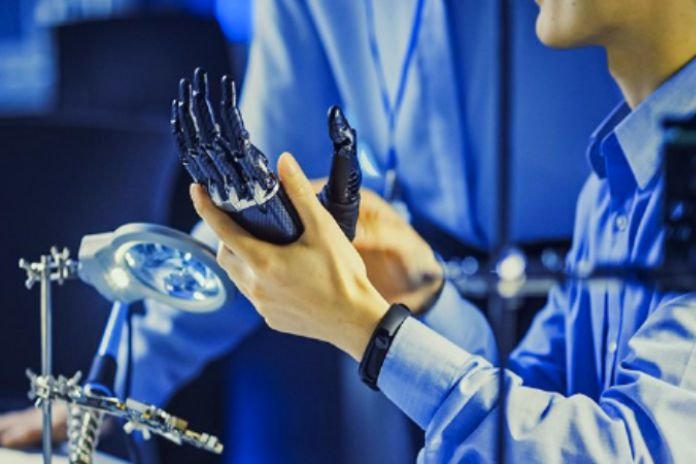AI: What Are Its Applications In Engineering?
Technologies like Artificial Intelligence (AI), Machine Learning, and the Internet of Things (IoT) are setting a new standard for efficiency and forcing companies to revisit their business plans to find ways to incorporate them.
Several costs in the industry go unnoticed by managers but can be avoided by artificial intelligence systems. These technologies offer the opportunity to streamline business processes, anticipate future problems, and increase employee productivity. So, when technology is used correctly, factories become more efficient, which means higher profits and lower costs.
AI applications, in some niches, illustrate an optimistic outlook for the industry’s future. It enables organizations to limit the time human workers spend on repetitive and time-consuming tasks and streamlines the entire field service workflow to maximize efficiency, cut costs and maintain a competitive edge.
It’s not science fiction, and it’s not a vision for the future. These are practical, AI-powered solutions aimed at solving real-world workforce management problems.
AI And The Future Of Work
One factor that has caused a lot of insecurity regarding Artificial Intelligence is the prediction that many of the jobs we know today will change considerably in nature or even be eliminated. After all, are we going to lose our jobs to robots?
With the exponential growth of the market for technologies involving automation and AI, it is normal for this topic to cause some anxiety. The idea is that as machines take on repetitive tasks and people’s work becomes less routine, we can better leverage our most essential capabilities, such as creativity, empathy, and critical judgment – traits that distinguish us from machines.
Many functions performed by people are much more productive when performed by machines. However, Artificial Intelligence proves to be a complement to improve – and not replace – the human being. What will occur is a transformation of the professions.
Since machines perform the most bureaucratic jobs, new professions will be focused on creating new items and services and improving existing ones. Industry 5.0 recognizes that man and machine must be interconnected to meet the manufacturing complexity of the future.
Applications Of AI In Engineering:
Machine Learning
It uses algorithms to make Artificial Intelligence develop analytical models. From these models, the machine interactively creates a learning process independent of its initial programming, helping to find insights and supporting the entire decision-making process.
Deep Learning
These neural networks allow you to perform data mining and pattern recognition on large data sets that would not otherwise be readily quantified or classified. Allowing predictive algorithms to work directly with information that previously required humans to sort and sort.
Risk Forecasting And Management
With Artificial Intelligence, tests can be carried out on the feasibility of solutions and the effectiveness of materials. For example, Autodesk has released BIM 360 Project IQ, software that uses connected data and machine learning to predict and prioritize high-risk issues and provide insights into key challenges facing construction managers.
Modular Or Prefabricated Construction And 3D Printing
Program 3D printers to assemble precast and prefabricated structures. Thus, with a large part of the structure carried out by robots, human labor will be used mainly for the foundations and the execution of hydraulic and electrical projects, in addition to the finishing stage.
Predictive Maintenance
It aims to periodically monitor the operation of machines, equipment, and parts of a factory, to detect failures before they occur and prevent interruptions in the production line. For example, they may be able to cross-reference the data received from the sensors of the factory machines with other information present in the cloud, offer informed solutions to managers, and calculate the losses of resources and products that a defective part is causing in production and compare this loss. The company’s cost would have to replace it with a new one, suggesting the most profitable option.
Strategic Decision Making
For example, interpret data extracted from systems such as Enterprise Resource Planning (ERP) and Business Intelligence (BI), looking for insights and relevant information that collaborate for quick and much safer decision-making. Thus, generating greater precision in the cognitive relationship between events, creating alerts, and predicting problems that may prevent the perfect performance of the production process.
Project Monitoring
Managers can use neural networks, using drone-generated imagery and laser-generated data, capturing project progress, to teach AI how to create 3D “twin models” to match the BIM-generated models. They can, for example, evaluate images collected by drones to compare construction defects with existing drawings. You can also identify security risks at project sites.
Logistics
With real-time behavioral predictions and guidance. In addition to optimizing delivery traffic routes, improving navigation, rationalizing fuel usage, and shortening lead times, it can reduce manufacturing downtime and oversupply and increase the predictability of shipments – all resulting in cost reductions, logistical burdens, and variability.
Also Read: What Are The Origins Of Artificial Intelligence?
Share this content:











Post Comment